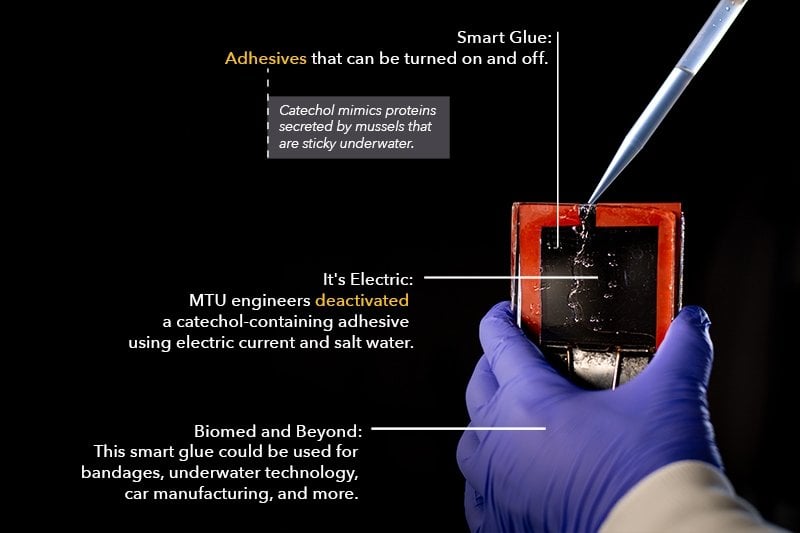MTU Engineers Zap and Unstick Underwater Smart Glue
With a small zap of electricity, biomedical engineers at Michigan Technological University take an underwater smart glue prototype from sticky to not in seven seconds.
Turning adhesion on and off is what makes a glue smart. It’s one thing to do this in the open air and quite another under water. Inspired by nature, catechols are synthetic compounds that mimic the wet-but-still-sticky proteins secreted by mussels and offer promise for smart adhesives that work in water. The technology could help with underwater glue, wound dressings, prosthetic attachments or even making car parts and in other manufacturing.

Biomedical engineers Bruce Lee and Saleh Akram Bhuiyan test catechol-containing adhesives to make underwater smart glue.
Catechols for Smart Glue
One day catechol adhesives may help attach equipment to the hulls of submarines but testing prototypes in scuba gear isn’t how new tech gets created. Instead, Lee and Bhuiyan need to control a suite of variables in a small lab space. Simple as it sounds, running a current through a material and checking its stickiness is actually quite difficult to do over and over again.
Bhuiyan developed a setup that uses a titanium sphere and a platinum wire electrode to apply electrical stimulation to the adhesive that is in contact with the sphere in the presence of salty water. This method makes it easy to control the voltage applied through the wire, glue and sphere as well as how salty the water is around them. The amount of time the current runs is also important. With more time, voltage and salt, the more the catechol adhesives gets oxidized and the less adhesive it becomes. With strong enough voltage, the glue detaches in only seven seconds.
“The novelty is application of the electricity and the short amount of time it takes to detach,” Bhuiyan said. “What I find most unusual about the experiment is the color change. It starts white and when I apply the electricity and the material is deactivated, it oxidizes and turns a red color — and we really like to see that red color.”
From:Michigan Tech









